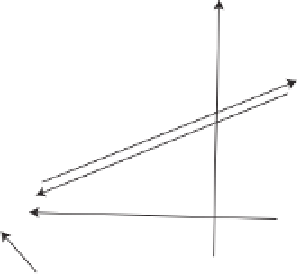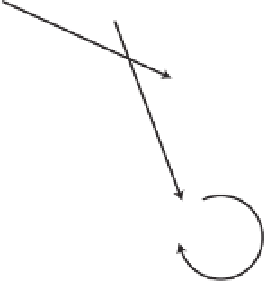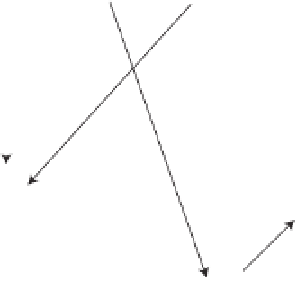Environmental Engineering Reference
In-Depth Information
Pinus sylvestris
woodland
Betula
woodland
Betula
woodland
Pinus sylvestris
woodland
Ulex
and
Sarothamuns
scrub
Juniperus
scrub
Ulex
and
Sarothamuns
scrub
Juniperus
scrub
Calluna
dominant
heath/moor
Pteridium
dominant
stands
Calluna
dominant
heath/moor
Pteridium
dominant
stands
Dominant
Nardus
or
Deschampsia
flexuosa
Agrostis-Festuca
grassland
Agrostis-Festuca
grassland
Dominant
Nardus
or
Deschampsia flexuosa
(a)
(b)
Betula
woodland
Pinus sylvestris
woodland
Ulex
and
Sarothamnus
scrub
Juniperus
scrub
Calluna
dominant
heath/moor
Pteridium
dominant
stands
Dominant
Nardus
or
Deschampsia flexuosa
Agrostis-Festuca
grassland
(c)
Figure 14.1
Successional transitions in north-east Scotland under (a) low grazing pressure and no fire, (b) high grazing pressure and
frequent fires, and (c) intermediate grazing pressure and infrequent burning. Arrow thickness refers to frequency of transition.
Source: Miles (1985).
simply expressed in verbal, diagrammatic or tabular
form (e.g. Braun-Blanquet, 1954; Walter, 1973; Nahal,
1981). These qualitative rule-based models can also be
implemented as computer models that predict directions
of change, though predicting rates of change may require
a more quantitative approach (Oxley, 2000; McIntosh
et al
., 2001).
A different approach has been to disaggregate vegeta-
tion to the species level and develop rules that express the
ecological properties and behaviour of the component
species. Noble and Slatyer (1980) identified the 'vital
attributes' that relate to recurrent disturbance by fire.
The effects of different fire regimes could be predicted
from knowledge of the life-history characteristics of the














































Search WWH ::

Custom Search